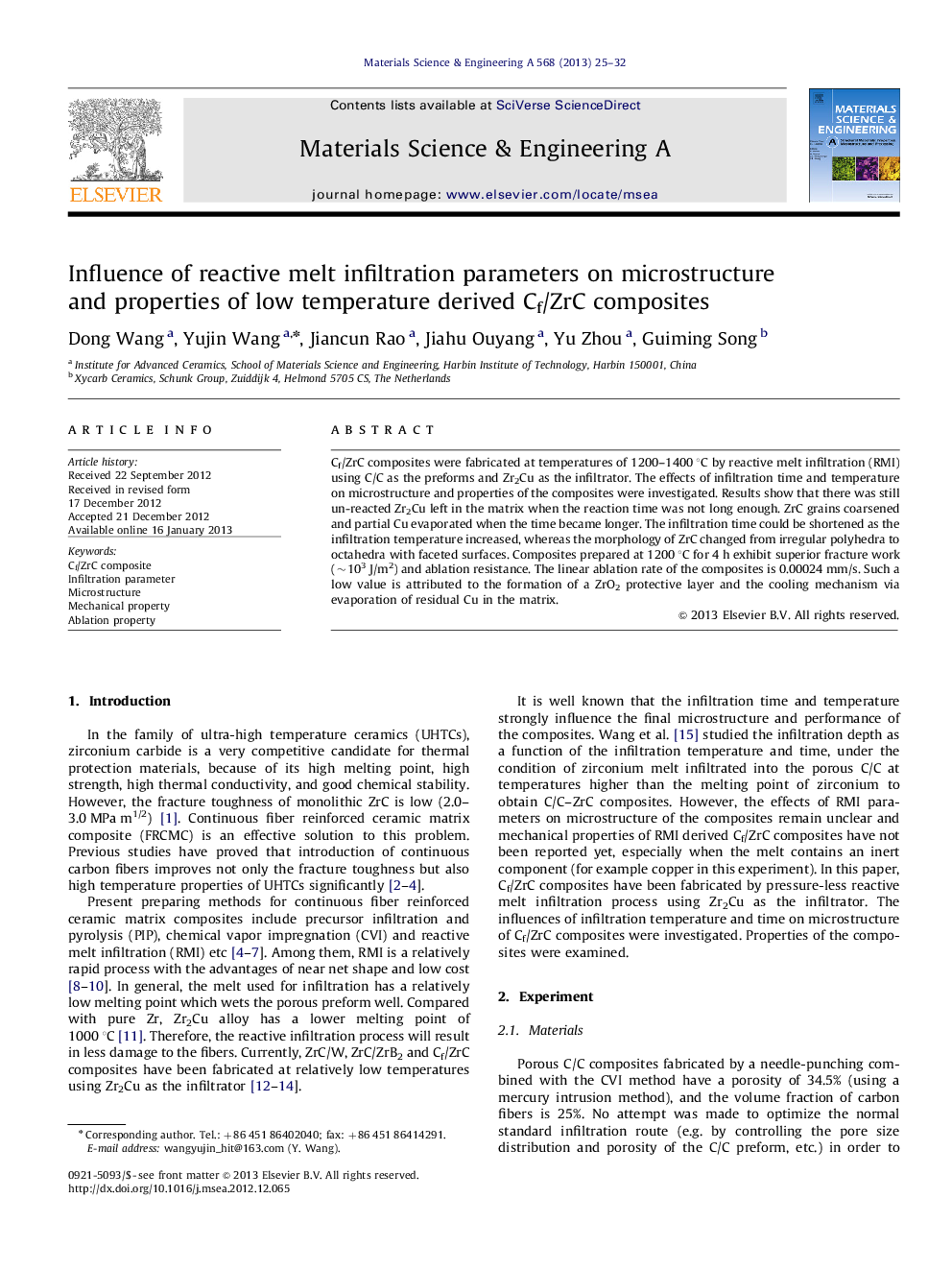| Article ID | Journal | Published Year | Pages | File Type |
|---|---|---|---|---|
| 1576308 | Materials Science and Engineering: A | 2013 | 8 Pages |
Abstract
Cf/ZrC composites were fabricated at temperatures of 1200-1400 °C by reactive melt infiltration (RMI) using C/C as the preforms and Zr2Cu as the infiltrator. The effects of infiltration time and temperature on microstructure and properties of the composites were investigated. Results show that there was still un-reacted Zr2Cu left in the matrix when the reaction time was not long enough. ZrC grains coarsened and partial Cu evaporated when the time became longer. The infiltration time could be shortened as the infiltration temperature increased, whereas the morphology of ZrC changed from irregular polyhedra to octahedra with faceted surfaces. Composites prepared at 1200 °C for 4 h exhibit superior fracture work (â¼103 J/m2) and ablation resistance. The linear ablation rate of the composites is 0.00024 mm/s. Such a low value is attributed to the formation of a ZrO2 protective layer and the cooling mechanism via evaporation of residual Cu in the matrix.
Related Topics
Physical Sciences and Engineering
Materials Science
Materials Science (General)
Authors
Dong Wang, Yujin Wang, Jiancun Rao, Jiahu Ouyang, Yu Zhou, Guiming Song,
